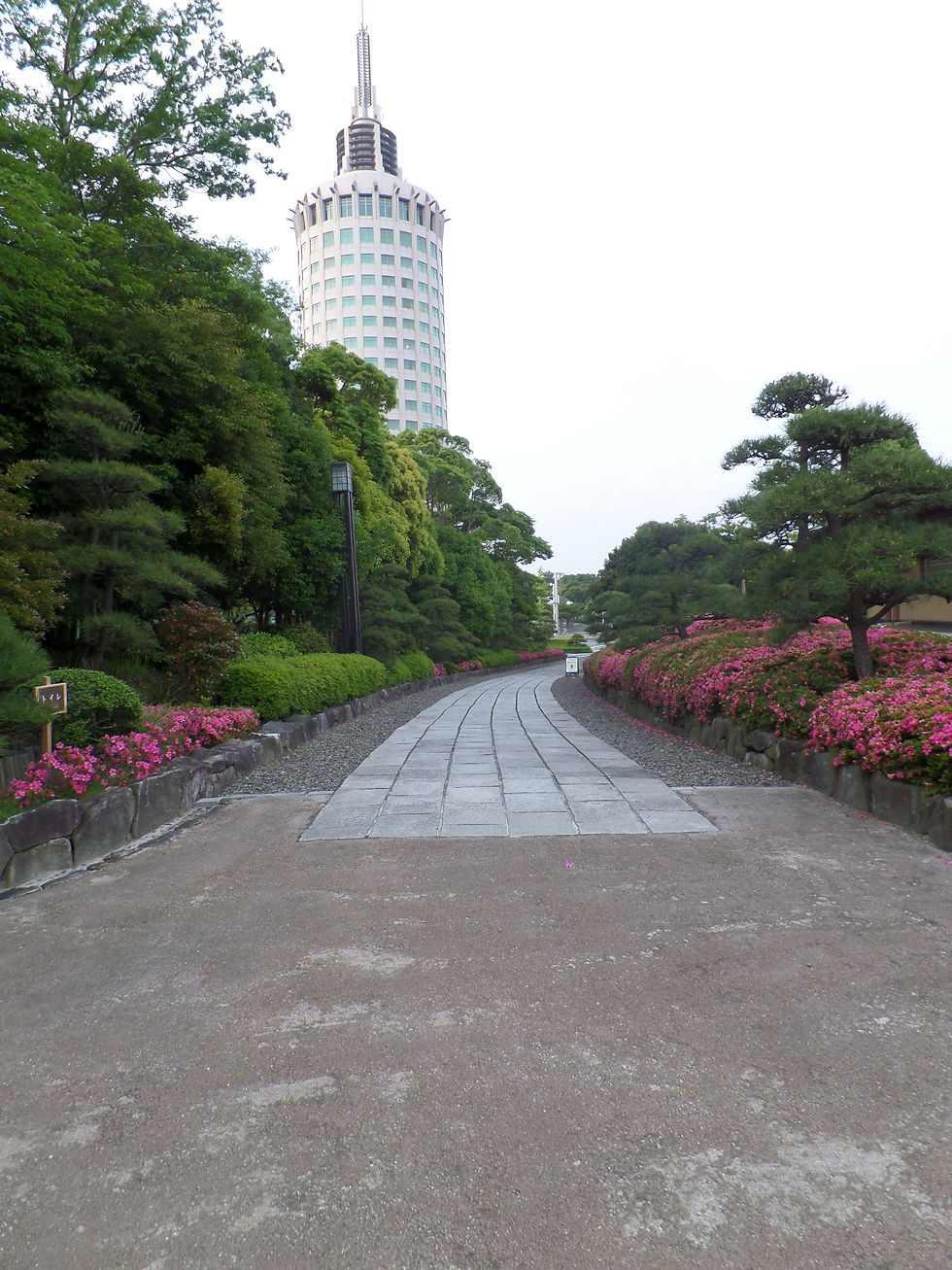Study Abroad in Tokyo Japan

Healing: A Journey through
Destruction
While in Japan, I took a course titled Philosophies of Wellness: Holistic Healing in Japan. Philosophies of wellness, noted in the title of the course, encompasses the Japanese principles of aesthetics (mono no aware, wabi, sabi, yugen, and kire). Mono no aware, beauty in the impermanence of an object. Wabi, beauty in imperfection. Sabi, beauty in rusticness or patina. Yugen, beauty in the unknown. Kire, beauty in the cutting of objects. These principles are valued and are seen as necessary in Japan for creating a sense of wellness.
These principles can all be discovered in nature and are very present within the city of Tokyo. There are many gardens that break up the landscape of the otherwise hectic city. The gardens provide a sense of relief, a sanctuary for meditation and thinking, away from the bustling of Tokyo. They are readily available around shrines, neighborhoods, and districts of the city, serving the people that live there. The deliberateness of theses gardens contributes to an overall healthy environment that allows people to thrive, but they seem to fade into the background. Unless these gardens are pointed out as intentionally contributing to a sense of balance, contributing to wellness, they just seem to be a normal part of everyday life. I became very interested in this intentional placement of gardens throughout the city which started my interest in natures role in healing and overall wellness.
To the left is a link to my final project which outlines my observations while in Tokyo.
Balance requires many different aspects to align. To create a sense of balance, the environment around an individual needs this convergence. An optimal healing environment, according to the International Future Forum World System Model, is created through the interaction of various factors that can be seen in the image to the right. These factors emphasis that there are aspects of our immediate environments, our communities, and globally that affect the overall health of an individual. When all of these factors align, an environment that supports wellbeing and healing is created. If one of these aspects is out-of-line, then there is an imbalance that weakens the overall wellbeing of an individual, community, or the world. When a large scale disaster occurs or an unexpected illness, some aspect of this system is out-of-line. To return to a state of wellbeing, the aspects need to realign to create a new sense of balance.
CSPH 3101: Creating Ecosystems of Wellbeing




Balance is a state of wellness. There is a sense of equilibrium as life proceeds as it normally would.

Hodgson, T. (n.d.). World System Model [Digital image]. Retrieved from http://www.internationalfuturesforum.com/world-model
Balance
Most often, individuals are in a state of balance. Before my capstone, I was in a state of balance. In other words, there were a multitude of factors converging that created an overall sense of wellbeing in me and surrounding me. I had a career goal to become a physician assistant, a path to get there, and was healthy.
Community is one aspect in the International Future Forum World System Model (shown above). This is one aspect of the model that I chose to learn more about through an independent study opportunity with Yuko Taniguchi.
To have a strong sense of community, people have to know one another. They cannot be self-absorbed and neglectful of their relationships.
To challenge how the University of Minnesota Rochester (UMR) community knows each other, we asked students in CLI 3712: Capstone Writing and CLI 4713: Capstone Reflections I & II to take a picture based on the prompt "Take a picture of something 'Larger than Yourself'" and reflect upon it. The prompt was left up to the students' interpretation and could be taken literally or in various abstract ways. Many students took this prompt seriously and thought creatively, resulting in the compilation of images to the left (not all images are shown).
The images were shared among the students in their respective CLI course. Students learned about their peers from a different perspective utilizing an artistic medium. I hope this project strengthened how students know and view one another.
With this project, I aimed to strengthen the bonds between peers. I think that with this project, students feel they have become closer with each other, establishing a stronger balance in the UMR community.

